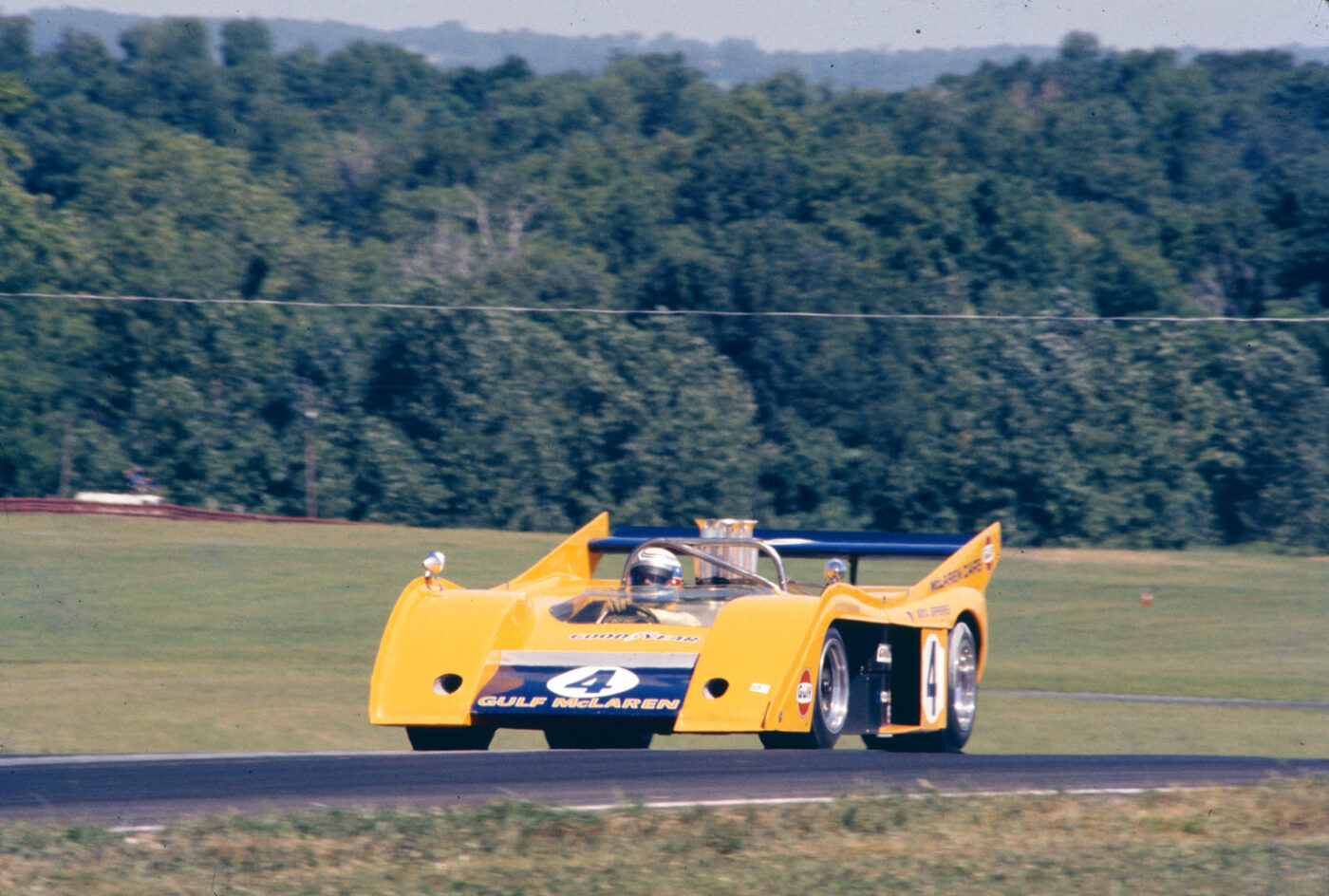McLaren M20
From 1968 to 1971 the McLaren M8 and its derivatives had dominated the Canadian-American Challenge Cup Series but that was set to change with the imminent arrival of the turbocharged Porsche 917/10 in 1972. These were arguably McLaren’s best race cars ever. Extensive rule changes for the World Sportscar Championship had limited the German manufacturer’s option after 1971 and their attention turned stateside. Defending champions McLaren assessed the situation and decided to start with a clean sheet of paper. Designed by Gordon Coppuck and dubbed the McLaren M20, the all new Can-Am racer was ready for extensive testing in the Summer of 1972.
Following the latest Formula 1 design trend, Coppuck moved the radiators from the nose to the ‘side-pods’ alongside the cockpit. The advantages of this repackaging were numerous; the mass of the radiators was much closer to the car’s centre of gravity, there was no longer a need to run hot water-pipes to the nose of the car, which greatly improved driver comfort and finally the space traditionally reserved for the radiators could now be fully optimized for aerodynamic purposes.
No Subscription? You’re missing out
Get immediate ad-free access to all our premium content.
Get Started



